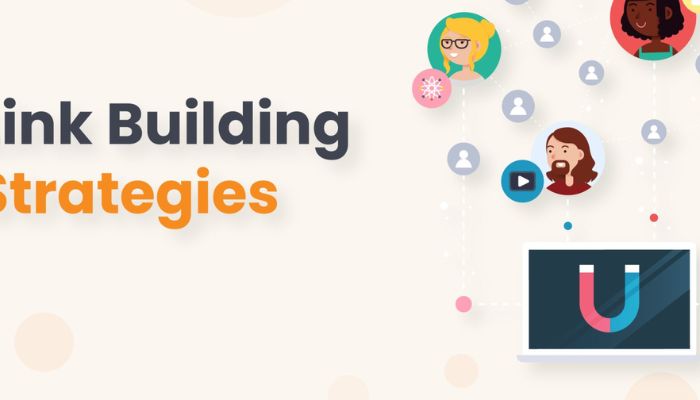As an SEO expert with more than 7 years of experience, I’ve been lucky enough to teach many WebCourses.in courses on building links. Over the years, I’ve learned that real-life examples are the best way to help students understand complicated ideas and strategies for building links. Read below about “How Real-Life Examples Enhance Learning in the 2024 Link Building Course.”.
I’ll talk about how I use examples from my job to help me learn in the 2024 Link Building Course in this post. Whether you’re new to SEO or have been doing it for a while, learning through real-life stories and case studies is a powerful way to improve your skills.
Table of Contents
The Importance of Real-Life Context
Building links is still one of the most important ranking factors for SEO success. Having said that, it is also one of the most complicated topics.
Sometimes, just telling students the best ways to build links isn’t enough to fully understand how to run campaigns. We need to see examples from real life to back up the theory.
As a teacher, I’ve noticed that students learn best when they can connect what they’re learning to real-life situations. An example from real life is very helpful for students to understand the connection between strategies for building links and outcomes.
Sharing Client Wins and Lessons Learned
I use a lot of anonymous client examples in each module of the 2024 course. For example, I’ll talk about how I got high-quality backlinks from industry resources for a top B2B tech client when I talk about outreach strategies.
Instead of leaving it vague, I’ll go into more detail about how we reach out, such as:
- We sent personalized emails to prospects based on what they were interested in.
- Here are some examples of the kinds of unique content assets we asked for
- Once they’re live, screenshots of the secured backlinks
Students get a better understanding of tried-and-true methods by looking at specific examples of outreach that worked. I also share openly examples of mistakes I’ve made in outreach or plans that didn’t work. It’s just as important to learn from mistakes as it is from successes.
I use examples from a variety of niches and industries throughout the course to show how broad the strategies are. Students can still use what they’ve learned even if their main area of interest is different.
Turning Concepts into Actionable Takeaways
Frameworks and ideas are important, but what students really want is to know what they can use in real life. That’s why I end each module by turning the lessons into things that can be used right away.
For example, after I talk about the framework for outreach, I’ll give students a simple list of steps they can take right away based on what clients liked:
- Find new customers and make emails more personal.
- Send newsworthy content assets to add value.
- If you don’t hear back after two weeks, follow up.
- Build relationships through a number of interactions.
The format of the checklist makes it easy to understand what they need to do. I might even give learners real outreach templates and swipe files that I’ve used with clients as examples.
By bridging the gap between ideas and practical advice, the teacher gives students a plan for how to carry out link building campaigns.
Bringing Case Studies to Life
Case studies are a great way to teach because they tell the whole story from beginning to end. I use a few case studies that show a wide range of problems and how to solve them when building links as part of my lessons.
One case study, for instance, is about changing how an e-commerce site built links because it relied too much on paid ads. I talk about the strategic audit we did, as well as the targeted outreach, link reclamation, and other strategies we used to boost our organic rankings.
The case study format lets me tell the whole story: the client’s problems, our process, the problems we ran into, and the solutions we found. Students learn in detail how to run a link-building campaign with many different parts.
I use a lot of facts and figures to try to make case studies come to life. I don’t leave it vague; instead, I give specifics like
- How many links are made every month
- The kinds of linking domains that are safe
- Data from before and after on traffic and rankings
- The real return on investment (ROI) the client saw from more organic visibility
This level of openness helps students remember important things and gives them confidence to use link-building.
The Proof is in the Results
It’s said that “the proof is in the pudding.” The most convincing real-life examples are the ones that have been shown to work. So, throughout the course, I talk about the real return on investment (ROI) and the impact that link-building campaigns have had on clients.
Here are some of the results I show:
- An online jewelry store that saw a twofold rise in sales and organic traffic five months after starting a campaign to reach out to bloggers
- A nearby plumbing company went from page 3 to page 1 for their main services terms after guest posting and getting backlinks.
- With the help of content syndication and newsjacking, a Fortune 500 company raised its domain authority by 15 points and cut its reliance on paid ads by 40%.
- By showing a measurable ROI, these link-building strategies are shown to work when used strategically. As you can see, the results are clear: higher rankings, more traffic, more brand awareness, and more.
Real Examples Build Trust and Credibility
But in the end, real-life examples are strong because they make people believe you. As students, we want proof that the strategies we are being taught really do work when used correctly.
By using examples from my work, students can be sure that they are learning best practices that have been used in the industry for a long time. The in-depth stories and case studies show that these are methods I’ve successfully used in a wide range of situations, not just in theory.
My goal is for students to feel confident that they have learned everything they need to know to be successful in modern link-building when the course is over. Putting what they’ve learned into real-world situations helps them get things done right away.
Conclusion
Students can understand link-building ideas better and more deeply when they use real-life examples. As an SEO teacher, it’s my job to make sure that my students don’t just understand link building on paper. But can also confidently run campaigns based on what they’ve learned in the real world.
There is a gap between theory and practice, and the 2024 Link Building Course is meant to fill that gap. Students get the clarity and confidence they need to master these skills and move up in their SEO career by hearing about client wins, failures, case studies, and proven results. The proof is in how well they did. I hope you understand the “How Real-Life Examples Enhance Learning in the 2024 Link Building Course”.

Shivam Mishra is the lead writer at webcourses.in, where he shares his expertise in web development, particularly in the MERN stack (MongoDB, Express.js, React, Node.js). With a solid foundation in Java and Data Structures & Algorithms (DSA), Shivam creates content that resonates with developers and tech enthusiasts alike. As a former Web Development Club Captain, he has led projects like an Air-BNB replica and a YouTube clone. Recognized as a two-time CODE-Hunt winner and LinkedIn Top Voice in Web Development, Shivam brings a wealth of knowledge to every article.
Connect with Shivam on LinkedIn.

